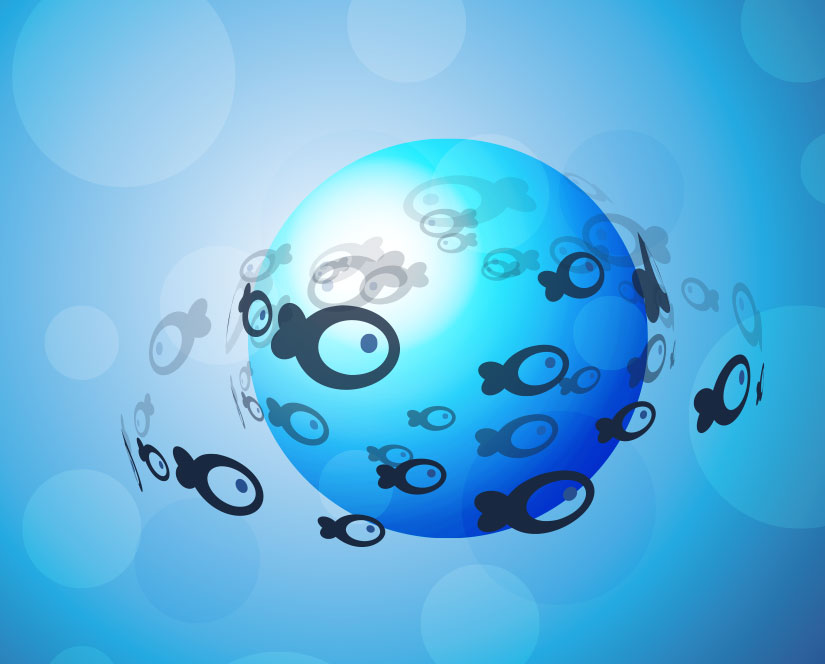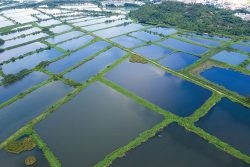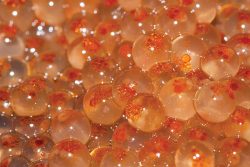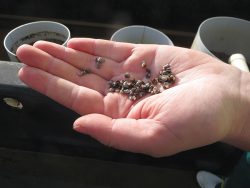
Features
2023 outlook
Looking ahead at what’s in store for the industry around the world
January 6, 2023 By Hatchery International staff
 Photo: © bagotaj / Adobe Stock
Photo: © bagotaj / Adobe Stock The past few years have been challenging for the hatchery industry around the world. Contending with a global pandemic, supply challenges and labour shortages have changed the face of hatcheries for many.
Although there is still uncertainty, the road is definitely getting clearer. The questions remain: Do further changes/challenges lie ahead? And how will the hatchery sector adapt?
In this industry outlook, Hatchery International explores the industry prospects for 2023, where our writers from around the world share their expectations for the industry in North America, Europe, Russia, Southeast Asia and Australia.
North America
Climate seems to be issue #1, #2, and #3 for hatcheries in North America.
For U.S. shellfish growers, who represent more than 80 per cent of marine aquaculture’s value, concerns have been intensifying.
In 2018, a group of seven leaders formed a partnership with The Nature Conservancy to create the Shellfish Growers Climate Coalition. It now has 250 members.
Oyster hatcheries are witnessing the impact of higher temperatures, declining water quality, and weather extremes. Losses occur in oyster larvae production and “seed is just not performing as well as it used to. That’s something that really needs to be addressed,” said Chris Sherman, CEO of Massachusetts-based Island Creek Oysters, one of the coalition’s founding members.
Hatchery managers are also keeping a close eye on water quality. “If water becomes more acidic over time, it could be detrimental to larvae production. This is because the calcium bicarbonate in oyster shells can degrade,” said Natalie Ruark, the nursery manager at Hoopers Island Oyster Co. on Maryland’s Chesapeake Bay.
Because so many hatcheries are in low-lying areas, sea level rise is also something to watch, added Stephanie Wiegand, hatchery manager at Hoopers Island. If flooding makes it hard to reach a hatchery, daily monitoring of larvae and water quality can suffer.
But a step forward in counteracting the impact of climate change is the creation of the Northeast Oyster Breeding Center, a collaboration between NOAA and the USDA.
“There’s a lot of excitement there, and partially in the context of climate change. The idea is to use genetic techniques to improve oyster lines to be more adapted to local conditions,” said David O’Brien, deputy director of NOAA Fisheries Office of Aquaculture.
Canadian salmon hatcheries had a close call with Mother Nature this fall, when Hurricane Fiona hit Atlantic Canada, where leading Atlantic salmon producers like AquaBounty, Cooke Aquaculture, and Mowi have operations. Although there was no damage this time, the potential looms for extreme weather events to disrupt power supplies and damage infrastructure.
That has already happened for the Pacific Region Salmonid Enhancement Program, a Canadian government initiative to conserve and restore Pacific salmon stocks. Last year, in British Columbia, floods washed out water intake pipes and basins at one hatchery. This year at another facility, a drought made it necessary to sandbag a river to redirect water to intakes.
– Lynn Fantom
Europe

Photo: © leungchopan / Adobe Stock
It would be easy to deliver a doom and gloom verdict on the industry’s prospects for 2023, weighed down by rising energy costs, labour shortages and a consumer base, which is rapidly running out of cash.
Talking to producers, however, there are still plenty of upbeat attitudes and ambitions on display, largely based on the drive and optimism which brought many of these people into our industry in the first place.
The truth is probably somewhere in between these two extremes. Russia’s invasion of Ukraine changed everything at both a human and economic level in 2022. While we all hope the human tragedy will cease in the year ahead, the economic legacy of the past 10 months will be with us for a considerable time to come.
Soaring energy prices dominate the immediate economic impact of Russia’s war, adding sharply to production costs for hatchery enterprises, RAS and traditional. Some businesses, of course, already have well-developed solar and wind power alternatives to call on – options which will help to soften cost pressures in 2023.
“The key is to target the ratio of energy per kilogram of fish produced,” said Andreas Mäck, CEO of InfiniteSea, a Yellowtail kingfish RAS-based producer based in Völklingen, Germany. “The problem in the past with RAS systems is that many have been operating under capacity but still have high energy costs to bear. If you can realise your capacity target, however, then the importance of energy costs starts to sink.”
InfiniteSea is currently in a redevelopment phase with the aim of ultimately producing a high-capacity 800 tonnes of Yellowtail kingfish and Yellowtail amberjack. Having recently faced an 11-fold increase in energy costs, albeit from a very low base, Mäck is determined to get the future production/cost ratio of the business right. He’s also extremely upbeat about the 2023 market for Yellowtail kingfish, commenting that both demand and prices look good for the coming year.
Also optimistic is Alastair Barge, managing director of Otter Ferry Seafish in Scotland, despite agreeing that the recent increase in power costs has “certainly sent shock waves through the land-based sector.”
“Sometimes a shock is quite good for focusing the mind,” he said. “Aquaculture, like any business, is about managing change, of course, and Otter Ferry has a 50-year history of managing change.”
In other words, 2023 won’t necessarily be easy, but producers in Europe are ready for the fight.
– Colin Ley
Russia
Russia has approved a new plan for the development of the fish farming industry in the next decade, setting targets to boost production and move away from critical dependence on imported technologies and raw materials.
Under a renewed strategy for the development of the agro-industrial and fisheries complexes published by the Russian government in September, Russian fish farmers are expected to see their output growing from 350,000 tonnes in 2021 to 618,000 tonnes in 2030.
In the new version of the strategy, the long-term goals remained unchanged, even though the Russian fish farming industry still finds itself in a tough situation, owing to sweeping western sanctions that disrupted the supply of aquafeed, broodstock and technologies.
Over the past few decades, cage farming has been the backbone of Russian aquacultural development. However, the growth potential in this field is nearly exhausted, said Vladimir Mazanov, executive director of the National Association of Industrial Aquaculture Enterprises, who believes that to secure further growth, the industry needs more farms employing RAS technologies.
For instance, in Karelia republic, almost all lakes and ponds suitable for cage farming are already used for growing fish, according to Mazanov, who explains that some water bodies do not fit for this purpose due to a lack of road infrastructure. RAS farms will also help the Russian aquaculture industry mitigate the strong dependence on imported broodstock.
In general, Mazanov said he is confident that both the production and the range in the Russian aquacultural industry will grow in the next years. To fuel this growth, he pointed out, the most favourable conditions for investments must be secured for fish farmers.
Over the past several years, some farmers tried to assemble RAS units independently. Only a few engineering companies specialize in creating RAS installations in the country. The largest western companies, such as Aquamaof and AKVA group, even in the previous years, were not interested in the Russian market since they focus primarily on servicing large farms, while most Russian RAS have low production capacity, said Mazanov.
In the new reality, Russian fish farms will have to rely mostly on self-assembled RAS installations, though it is likely that new companies providing ready sets of equipment will emerge on the Russian market in the next years. However, the quality of self-assembled installation used to be questionable even before sanctions wiped out almost all European equipment from the Russian market. According to market participants, Russian farmers are expected to rely increasingly on Chinese equipment in the coming few years.
Southeast Asia

Photo: © Carolyn / Adobe Stock
Year 2023 has been heralded as a milestone for aquaculture. This is when aquaculture is expected to overtake capture fisheries.
The projection augurs well for Southeast Asia, which is a global powerhouse in fish production. Of the 15 major global fish producers, half of the ten-member countries of the Association of Southeast Asian Nations are considered major producers, according to 2019 Eumofa elaboration of Eurostat and FAO data.
In aquaculture production, Indonesia was ranked second, Vietnam, fourth; Philippines, seventh; Myanmar, ninth; and Thailand, tenth. China was at the top of the list.
After a slight dip in consumption for fish in 2020 due to the COVID-19 pandemic, steady but slow uptick had been noted in 2021. Fish consumption is expected to steadily increase throughout the decade, overtaking demand for meat, based on forecast commissioned by the OECD-FAO.
Optimism generated by such projections, however, is inclined to tempered by other scenarios. While Covid has started to be managed, the ongoing Russia-Ukraine war presents the threat of recession. This was implied by a hatchery owner when asked by Hatchery International about his views on increased fry production in 2023.
“Not much, if the world economy or those of some countries are not improving,” said Suthi Mahalao, owner of Boonsawang Farm in Thailand, which has seabass hatchery and grow-out operations. They export fry to countries such as Vietnam, Malaysia, Singapore, Taiwan, Australia and Israel.
In terms of species diversification, the Southeast Asian Fisheries Development Center/ Aquaculture Department (SEAFDEC/AQD), based in the Philippines, is taking the lead.
In the Philippines, where milkfish and tilapia are still the dominant farmed species, the coming release of a new species by SEAFDEC/AQD is expected to create an impact.
“Snubnose pompano, scientifically called Trachinotus blochii, will be available for culture commercially,” said Dan Baliao, chief at SEAFDEC/AQD. “It’s a widely-sought endemic marine species in the Philippines and the life cycle of which has already been completed in SEAFDEC/AQD. Milkfish and tilapia are still the dominant farmed species in the country.”
“Commercial release of slipper lobster and round scad for aquaculture will eventually be available to interested parties in Southeast Asia. But with “rigorous research and verification program”, this is likely to go beyond 2023,” the agency stated.
– Ruby Gonzalez
Australia

Photo: John Mosig
The three years prior to 2023 were under the influence of a La Niña weather cycle in Australia.
In combination with two consecutive negative Indian Ocean Dipole (IOD) patterns, it brought unprecedented rainfall across the whole continent. While this has been devastating for agricultural crops and low-lying urban areas, the aquaculture sector, on the whole, rode out the conditions in reasonable shape and the cooler, more stable water temperatures have certainly been welcomed in some sectors.
According to the Bureau of Meteorology, there are signs the IOD is moving to neutral as is the El Niño-Southern Oscillation (ELSO).
As a world leader in performance-improved barramundi genomic development, Victoria-based MainStream Aquaculture supplies 30 per cent of world’s commercial seedstock, including 75 per cent of the domestic market. From their climate-controlled hatcheries in Victoria and Queensland, they are able to spawn around the calendar to cover their diverse clients’ stocking timetables.
Managing director and CEO, Boris Musa, is confident about the coming year. “Post-Covid, a number of farms are restocking in anticipation of stronger market conditions. Our forward orders are solid,” he said.
Murray Cod Australia is the country’s largest warm water finfish hatchery. Chairman Ross Anderson said, “While higher than average rainfall this season has certainly causing some inconvenience, this year’s spawning season well advanced and current larvae numbers indicating a better than average season, we are confident of reaching or exceeding our hatchery production targets for the 22/23 season.”
Shellfish Culture is the country’s leading shellfish hatchery. Scott Mactier, general manager of breeding and R&D, said, “While 2023 has been an exceptionally challenging year for the oyster industry around Australia with heavy flooding along most of the NSW coast, QX outbreaks in Port Stephens and biotoxin setbacks in Tasmania, we are very optimistic about the period ahead.”
“Pacific Oyster seed demand is strong across Tasmania, SA and NSW for both triploid and diploid oysters. NSW in particular is ramping up its Pacific Oyster production and demand for seed is booming. From a mature oyster perspective, market prices are increasing with an overall drop in production, largely in NSW,” Mactier added.
It seems the Australian hatchery sector is bullish about their prospects for 2023. The salmonid and prawn sectors tend to integrate their hatchery operations, consequently, their prospects for 2023 are balanced to their production requirements and the local and off-shore demand for finfish and seafood is strong.
– John Mosig
Print this page





